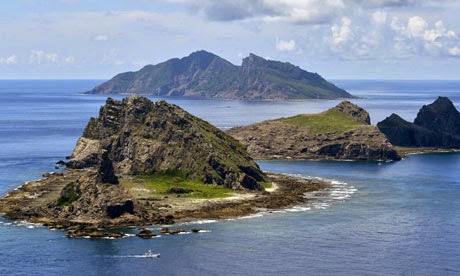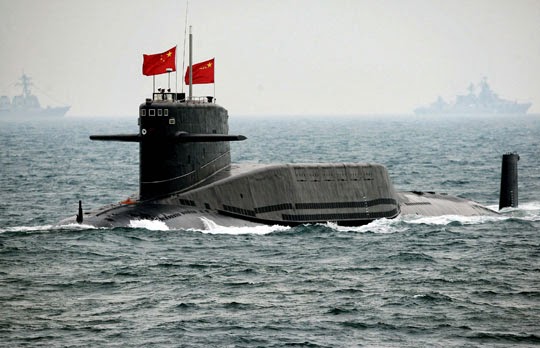Structural Realism
Structural realism emerged in the 1960s and 70 largely as a result of the influence of Kenneth Waltz. Waltz built the idea of the Structural realism based on the principles of the classical realism's fundamental principles of the three 'S'.
- Statism: States as the primary actors in international politics
- Survival: The single most important goal of all states.
- Self-Help: The anarchic nature (lack of overarching authority) of international politics and the mistrust between states results in states relying on their own for their survival.
However, Unlike the classical realism it puts the emphasis in the pessimistic human nature as the central element of international politics. structural realists such as Waltz stresses the constraining impact of the structure of the international system. In addition, Waltz argues that the differences between states in the anarchic international politics are of capability, not function.He argues that no matter how 'just' or 'good' a state is in its domestic politics, all states in the anarchic international politics behave in the same or similar ways due to the systematic pressures. Furthermore, structural realism stresses the regional importance of international politics rather than perceiving international politics as a whole.

 As the overwhelming majority of the population of Crimea identifies themselves as Russians and uses Russian as their main language, Moscow legitimizes its claims over Crimea as Putin argues that Russia "needs to protect the rights of Russian speaking minorities".
As the overwhelming majority of the population of Crimea identifies themselves as Russians and uses Russian as their main language, Moscow legitimizes its claims over Crimea as Putin argues that Russia "needs to protect the rights of Russian speaking minorities".
 Around 40.000 Russian troops remain around the Ukrainian boarder. Putin's speeches have made headlines day after day in the media. Putin stresses that the Russia will not back down from the crisis at all costs and that the Russian troops are ready for war if it was to break out. However, the outbreak of a war seems highly unlikely by the structural realist perspective.Though states behave accordingly to their own national interests, the international political system with its invisible code of conduct restricts certain actions of states such as war.
Around 40.000 Russian troops remain around the Ukrainian boarder. Putin's speeches have made headlines day after day in the media. Putin stresses that the Russia will not back down from the crisis at all costs and that the Russian troops are ready for war if it was to break out. However, the outbreak of a war seems highly unlikely by the structural realist perspective.Though states behave accordingly to their own national interests, the international political system with its invisible code of conduct restricts certain actions of states such as war.
 The obvious route for increasing diplomatic pressure through the UN security council is unavailable in the Crimea crisis as Russia is a permanent member and can veto any proposed action. Other organs of the UN such as the General Assembly, could pass non-binding resolutions, but Russia could simply ignore them. A structural realist would reject the diplomacy option. Structural realists does not believe in diplomacy based treaties as they reject the idea of an overarching authority such as the UN. Structural realists believe states as the primary actors in international politics. Unlike domestic politics where the law over-arches over the people, structural realists argue that no such overarching authority exists in international politics.
The obvious route for increasing diplomatic pressure through the UN security council is unavailable in the Crimea crisis as Russia is a permanent member and can veto any proposed action. Other organs of the UN such as the General Assembly, could pass non-binding resolutions, but Russia could simply ignore them. A structural realist would reject the diplomacy option. Structural realists does not believe in diplomacy based treaties as they reject the idea of an overarching authority such as the UN. Structural realists believe states as the primary actors in international politics. Unlike domestic politics where the law over-arches over the people, structural realists argue that no such overarching authority exists in international politics.

The Ukraine crisis has been one of the 'hottest' issues of the intentional politics. This blog looks to examine the crisis by the use of Waltz's structural realism.
Background knowledge of Ukraine and Crimea
The divisions of ethnic groups within Ukraine goes back much further than the recent events. The country has been torn apart by the east and the west based on the cultural and linguistic differences since the collapse of the Soviet Union in 1991.
Russian is widely spoken in the eastern and southern parts of Ukraine, including the Crimean peninsula. In the Western parts of Ukraine, where it is close to Europe, Ukrainian is used as the main language.
The differences in language also shaped the ethnic identity of the Crimeans. According to the 2001 Ukraine census, unlike most Ukrainians who identified themselves as Ukrainians, over a majority of the residents of Crimea identified themselves as ethnic Russians.
 As the overwhelming majority of the population of Crimea identifies themselves as Russians and uses Russian as their main language, Moscow legitimizes its claims over Crimea as Putin argues that Russia "needs to protect the rights of Russian speaking minorities".
As the overwhelming majority of the population of Crimea identifies themselves as Russians and uses Russian as their main language, Moscow legitimizes its claims over Crimea as Putin argues that Russia "needs to protect the rights of Russian speaking minorities". Why is Crimea so important to Russia?
Besides the protection of the Russians in Crimea, the peninsular is strategically important for the Russian navy. The Black Sea Fleet has been based on the peninsular since it was founded by Prince Potemkin in 1783. The fleet's strategic position helped Russia defeat Georgia in the South Ossetia war in 2008, and remains crucial to Russain security interests in the region. Since the independence of Ukraine, a leasing agreement has drawn up to allow the fleet to continue operating in the peninsula. In 2010, the lease was extended to 2042 in exchange for Russia's supply and discount of natural gas.
The second significance of the peninsular are the ports. Most of the Russian ports are inoperable during winter as the seas around the port freezes. The ports of Crimea remain operable throughout the winter as the climates around the Black Sea is much warmer. Thus, the ports of the region is important for Russia's economic gains as it offers an all-year-round naval trade route.
Possible resolutions to the crisis
It is extremely difficult to predict the outcome of the crisis due to its complexity. The media fears the outbreak of a war, and emphasizes the diplomacy option. However, I seek to dismiss the possibility of a war as well as rejecting the diplomacy option by the use of the structural realist approach.
The military option
 Around 40.000 Russian troops remain around the Ukrainian boarder. Putin's speeches have made headlines day after day in the media. Putin stresses that the Russia will not back down from the crisis at all costs and that the Russian troops are ready for war if it was to break out. However, the outbreak of a war seems highly unlikely by the structural realist perspective.Though states behave accordingly to their own national interests, the international political system with its invisible code of conduct restricts certain actions of states such as war.
Around 40.000 Russian troops remain around the Ukrainian boarder. Putin's speeches have made headlines day after day in the media. Putin stresses that the Russia will not back down from the crisis at all costs and that the Russian troops are ready for war if it was to break out. However, the outbreak of a war seems highly unlikely by the structural realist perspective.Though states behave accordingly to their own national interests, the international political system with its invisible code of conduct restricts certain actions of states such as war. The diplomacy option
 The obvious route for increasing diplomatic pressure through the UN security council is unavailable in the Crimea crisis as Russia is a permanent member and can veto any proposed action. Other organs of the UN such as the General Assembly, could pass non-binding resolutions, but Russia could simply ignore them. A structural realist would reject the diplomacy option. Structural realists does not believe in diplomacy based treaties as they reject the idea of an overarching authority such as the UN. Structural realists believe states as the primary actors in international politics. Unlike domestic politics where the law over-arches over the people, structural realists argue that no such overarching authority exists in international politics.
The obvious route for increasing diplomatic pressure through the UN security council is unavailable in the Crimea crisis as Russia is a permanent member and can veto any proposed action. Other organs of the UN such as the General Assembly, could pass non-binding resolutions, but Russia could simply ignore them. A structural realist would reject the diplomacy option. Structural realists does not believe in diplomacy based treaties as they reject the idea of an overarching authority such as the UN. Structural realists believe states as the primary actors in international politics. Unlike domestic politics where the law over-arches over the people, structural realists argue that no such overarching authority exists in international politics. 














